Tungnath Trek Distance, Difficulty & Tips for First-Time Trekkers
Published on July 25, 2025
Tungnath Temple Trek is a really special journey in the mountains of Uttarakhand. It takes you to the highest Lord Shiva temple in the world. The trek starts from a pretty little village called Chopta. This trip is great because it gives you both a peaceful, spiritual feeling and amazing views of nature. It's thought to be one of the easier treks in the Himalayas, so it's a good choice for people who haven't done much mountain walking before but still want to see the grandness of these tall peaks without too much effort.
The path goes through green open fields, thick forests with colorful flowers, and tall oak trees. As you walk up, you get more and more wonderful wide views of snow-covered mountains like Nanda Devi and Chaukhamba. After you reach the old Tungnath Temple, you can climb a bit more to the top of Chandrashila hill. From there, you get an incredible view all around. Even though it's high up, the path is clear and not too long, making this adventure a great success for anyone who is reasonably fit.
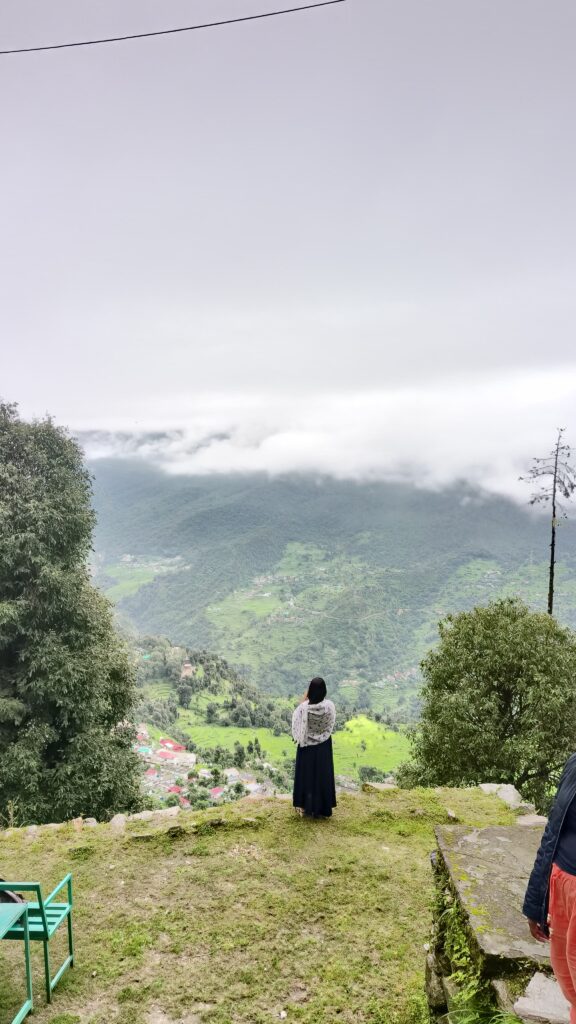
Chopta Tungnath Trek – 3 Days Itinerary for First-Time Trekkers
Day 0: Delhi to Rishikesh to Sari Village
- Departure: Start your journey from Botanical Garden Metro Station at 10:00 PM.
- Overnight Journey: Travel overnight towards Sari Village via Rishikesh.
- Stop at Devprayag: Witness the mesmerizing confluence of the Bhagirathi and Alaknanda rivers along the way.
Day 1: Sari Village to Deoriatal
- Arrival at Sari Village: Check into your homestay and take some time to freshen up.
- Trek to Deoriatal: Begin your trek to Deoriatal (2.5 km, approximately 1.5–2 hours).
- Enjoy Deoriatal: Soak in the serene beauty of the lake and the surrounding landscapes.
- Return to Sari Village: Head back to Sari Village and enjoy a peaceful evening.
Day 2: Sari Village to Tungnath & Chandrashila
- Breakfast: Start your day with a hearty breakfast at your homestay.
- Drive to Chopta: A scenic drive of about 1 hour from Sari Village.
- Trek to Tungnath Temple: Embark on a 3.5 km trek to the sacred Tungnath Temple.
- Summit Chandrashila: Extend your trek by 1.5 km to reach the breathtaking Chandrashila summit.
- Return to Chopta/Sari: After the trek, return to Chopta or Sari for an overnight stay at the campsite.
Day 3: Chopta to Delhi
- Breakfast: Enjoy an early breakfast at your campsite in Chopta.
- Departure: Begin your journey back to Delhi in the early morning.
- Visit Dhari Devi Temple: Stop by the revered Dhari Devi Temple en route.
- Arrival in Delhi: A long drive of approximately 10–12 hours marks the end of your adventure.
Inclusion
-
One Night Accommodation In Sari Village.
-
One Night Accommodation In Chopta/Sari Village.
-
4 Meals Will Be Provided Throughtout The Trip.
-
AC Transportation.
-
Guide While trekking.
-
Experienced Trip Captain Throught The Trip.
Exclusion
-
5% GST
-
Extra Drinks, Food, Tea and Snacks.
-
Tickets for any sightseeing or extra activity outside the camp area.
-
Travel Insurance and other benefits.
-
Anything which is not mentioned in inclusions.
-
Cost escalation due to any unforeseen reason like weather, road condition landslide etc.

How Far Is Tungnath? Real Trekking Distance Explained
When planning your trip to the famous Tungnath Temple Trek, one of the first questions people ask is, "How far is it, really?" It's a fair question because understanding the actual trekking distance helps you get ready. The good news is that the Chopta Tungnath trek is known for being one of the shorter and more approachable Himalayan treks, making it a favorite for many, including those new to mountain walking.
The actual trekking begins from a beautiful place called Chopta. This small, green meadow acts as the base camp for your journey to the highest Shiva temple in the world.
-
Chopta to Tungnath Temple: The primary trekking distance from Chopta to Tungnath Temple is about 3.5 to 4 kilometers (roughly 2.2 to 2.5 miles). This part of the trek involves a steady uphill climb.
-
Time Taken: Most people take around 2 to 3 hours to complete this section, depending on their speed and how often they stop for rest or photos.
-
Trail Condition: The path is well-marked, mostly made of stone steps or a clear dirt trail. It winds through lush green meadows and dense forests of rhododendron and oak trees.
-
Difficulty Level: This segment is generally considered easy to moderate. While it's an uphill climb, it's not overly steep or technically difficult, making it suitable for beginners with a basic level of fitness.
-
-
Tungnath Temple to Chandrashila Summit: If you're feeling energetic after reaching the temple, you can extend your trek to the Chandrashila summit, which is just above Tungnath.
-
Additional Distance: The distance from Tungnath Temple to Chandrashila Peak is an additional 1.5 kilometers (about 0.9 miles).
-
Time Taken: This last stretch usually takes another 45 minutes to 1 hour to climb.
-
Difficulty Level: This part is a bit steeper and can be more challenging due to the higher altitude and sometimes rocky terrain. However, it's still manageable for most people.
-
The Reward: Reaching Chandrashila offers a spectacular 360-degree panoramic view of prominent Himalayan peaks like Nanda Devi, Trishul, Chaukhamba, and Kedarnath. This view is often considered the highlight of the entire Tungnath Temple Trek.
-
So, in total, if you plan to trek from Chopta all the way to Chandrashila and back, the round trip is approximately 10 kilometers (Chopta to Tungnath 3.5-4km, Tungnath to Chandrashila 1.5km, and the same distance back). Many people complete the entire trek, including the Chandrashila summit, as a day hike, returning to Chopta by evening. However, staying overnight in Chopta or Baniyakund before the trek is highly recommended to help your body get used to the higher altitude.
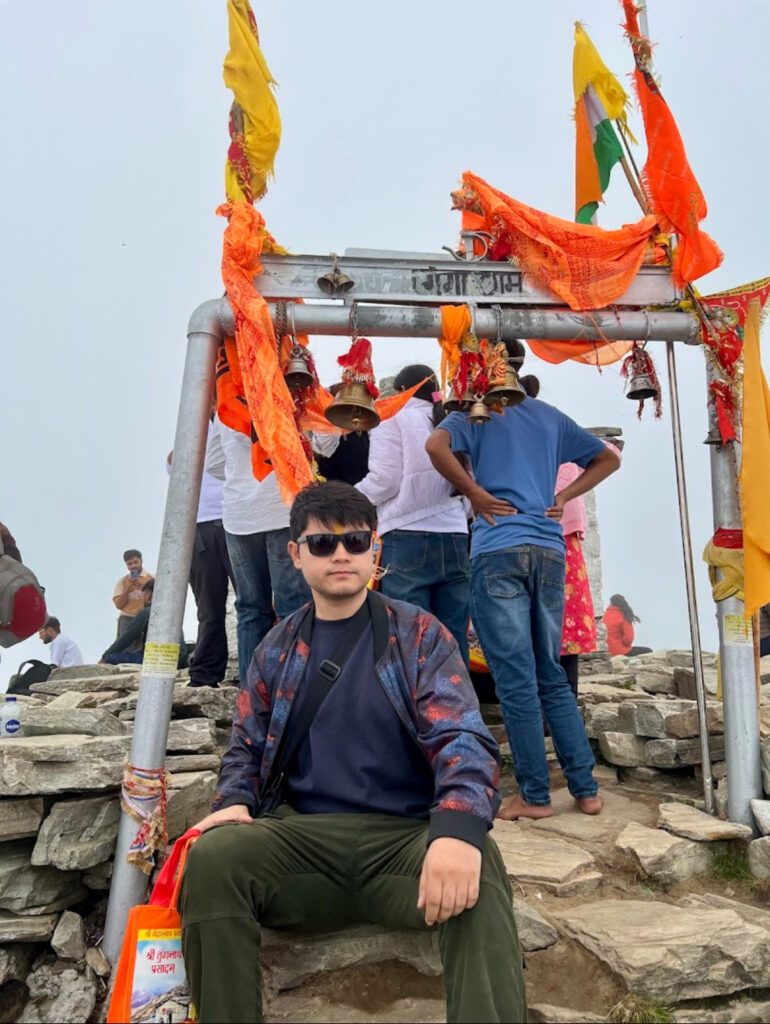
Trekking Alone vs. with a Guide – What’s Safer?
When planning your adventure, especially for a mountain journey like the Chopta Tungnath trek from Delhi or the full Tungnath Chandrashila trek from Delhi, a big question often arises: should you go alone or hire a guide? Both options have their appeal, but safety should always be the top priority.
Trekking Alone: The Appeal and the Risks
Trekking alone offers a unique sense of freedom, self-reliance, and solitude. For many, it's a chance for deep introspection and a direct connection with nature without distractions. You set your own pace, choose your own stops, and truly feel like you're conquering the trail on your own terms.
However, solo trekking, especially in the Himalayas, carries significant risks:
- Getting Lost: Even on a well-marked trail like the Chopta Tungnath trek, weather can change rapidly, visibility can drop, and signs can be obscured. Without a local guide, it's easy to lose your way, especially if you're not experienced with map reading or GPS.
- Medical Emergencies: Injuries (like sprains, falls), sudden illness (like altitude sickness), or unexpected health issues can be life-threatening when you're alone in a remote area with no one to help. Mobile network coverage can be spotty in the mountains.
- Weather Changes: Mountain weather is famously unpredictable. A clear morning can quickly turn into a snowstorm or heavy rain. A guide knows how to read the weather signs and advise on safe turning points or shelters.
-
Wildlife Encounters: While rare, encounters with wild animals are a possibility in dense forest areas. A guide understands local wildlife patterns and how to react safely.
- Psychological Challenges: Loneliness, fear, or panic can set in, especially if you face unexpected difficulties. Having a companion or guide provides moral support.
-
Logistics: Managing everything from permits, finding good places to eat and stay, to understanding local customs can be a hassle when you're on your own.
Trekking with a Guide: The Safer Choice
Opting for a guided trek, often part of a Chopta tour package, significantly enhances your safety and overall experience.
- Local Expertise: Guides are intimately familiar with the terrain, weather patterns, and safe routes. They know the shortcuts, the tricky spots, and where to find help if needed.
- Emergency Preparedness: Guides are trained in basic first aid and emergency response. They know how to identify and manage altitude sickness, and in case of a serious injury, they can organize rescue and evacuation much more efficiently.
-
Navigation Skills: You'll never get lost with a knowledgeable guide leading the way. They use their experience and often local insights that aren't on any map.
-
Cultural Insights: A guide can enrich your Tungnath Chandrashila trek from Delhi by sharing local stories, cultural information, and helping you interact with local communities. This adds a deeper dimension to your journey.
- Logistical Support: When you book a Chopta tour package with a guide, all the practical details – accommodation, meals, permits, and sometimes even transportation from places like Delhi – are handled, allowing you to focus solely on the trek.
-
Pacing and Acclimatization: Guides help you maintain a safe pace, especially for first-time trekkers, and ensure proper acclimatization to prevent altitude sickness.
-
Peace of Mind: Knowing you have an experienced professional looking out for your safety allows you to relax and fully immerse yourself in the natural beauty around you.
While solo trekking offers a unique thrill, for a route like the Chopta Tungnath trek from Delhi, especially if it's your first time in the Himalayas, joining a guided group or hiring a local guide is overwhelmingly the safer and more enriching choice.
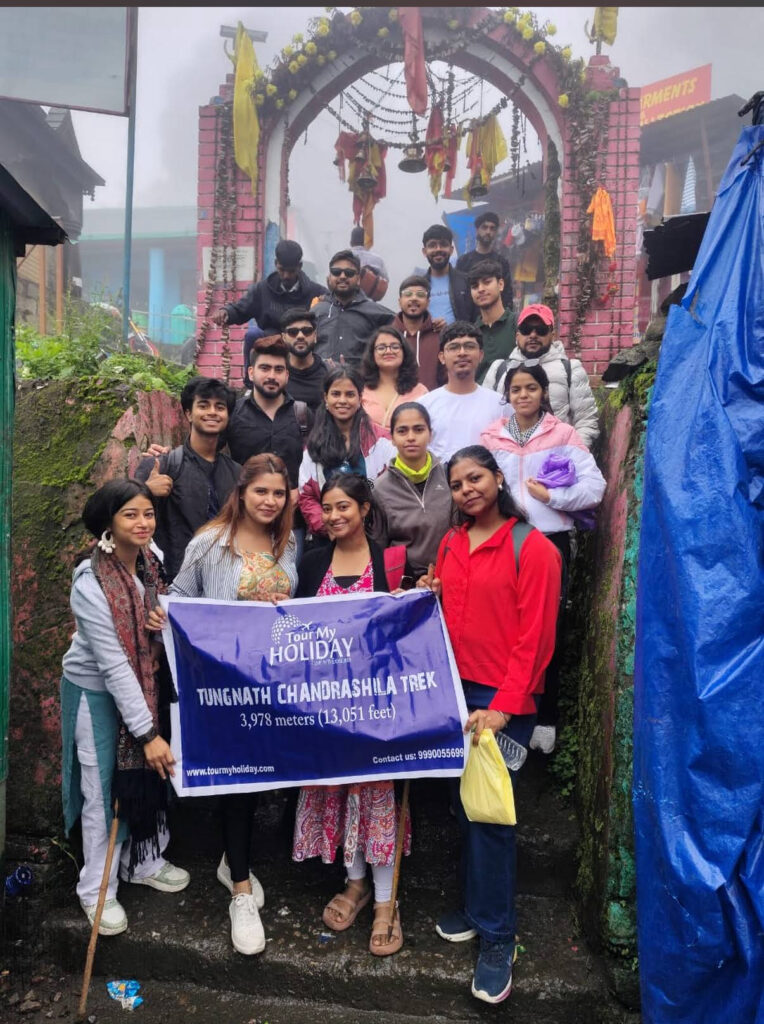
First-Time Trekker Tips from Those Who’ve Done It
Thinking about doing your first mountain walk, like the beautiful Tungnath Temple Trek? That's really cool! It might feel a bit scary at first, but lots of people have been right where you are and have some easy, helpful advice. These tips come from real walkers who've tied their shoes and gone into the mountains, so you know they work.
Here's what people who've trekked before want new walkers to know:
-
Start Easy, Like Tungnath: Don't pick the hardest walk for your very first time. The Chopta Tungnath trek is often called a "good for beginners" mountain walk for a reason. It's shorter and the path is usually clear, making it a perfect first taste of mountain walking. You get amazing views and feel really proud, without having to be a super athlete.
-
Get Your Body a Little Ready: You don't need to be super fit, but being a bit ready helps a lot.
-
Walk More: Start walking often, maybe 30-45 minutes every day. Try walking on different surfaces if you can, like stairs or up small hills.
-
Get Your Stamina Up: Focus on being able to walk for a few hours without getting too tired. Fast walking or cycling helps.
-
Don't Push Too Hard: Don't suddenly try to run a very long race just a week before your trip. Get ready little by little.
-
-
Wear Layers of Clothes, Don't Just Wear One Big Coat: Mountain weather changes quickly. The trick is to wear clothes in layers!
-
First Layer: Wear something that takes sweat away from your skin (like thin special shirts).
-
Middle Layer: Add a warm fleece or sweater.
-
Outer Layer: A coat that stops water and wind is a must, even if it looks sunny. You never know when it will rain suddenly or get windy, especially on the Tungnath Chandrashila trek.
-
Take On or Off: This way, you can easily change your clothes to stay comfortable as the weather changes.
-
-
Good Shoes Are Super Important: Your feet are the most important part of your body for walking.
-
Walking Shoes: Buy comfortable walking shoes that cover your ankles and have good grip. They should stop water from getting in, especially if you're going when it's rainy or snowy.
-
Wear Them First: Very important, wear your new walking shoes for a few weeks before your trip. This makes them softer and stops painful blisters from happening on the path.
-
Socks: Good, thick walking socks that take away wetness are just as important as the shoes.
-
-
Walk at Your Own Speed: Don't try to keep up with people who walk faster than you.
-
Slow and Steady: Walk at a speed that lets you breathe easily and enjoy the beautiful views.
-
Take Breaks: Stop often for short breaks to catch your breath, drink water, and look around. Listening to your body is key, especially as you go higher up.
-
-
Drink Lots of Water, All the Time: Drink water often, even if you don't feel thirsty. Not drinking enough can make you feel unwell from the high altitude. Carry a bottle you can fill again.
-
Snacks Are Your Friends: Pack snacks that give you energy, like nuts, dried fruit, energy bars, and some chocolate. These give you quick power when you need it most.
-
Think About a Guide or a Group: For your first time, especially on the Tungnath Temple Trek, going with a local guide or joining a small group (maybe as part of a Chopta tour package) is a really good idea.
-
Safety: Guides know the area, the weather, and what to do if there's a problem.
-
Help with Stuff: They can help with things like finding places to eat or stay.
-
Local Knowledge: They can tell you interesting stories about the place and its people.
-
-
Expect Simple Stays: In the mountains, places to stay are usually basic. Don't expect fancy hotels. Enjoy the simple but often very welcoming guesthouses or tents in Chopta.
-
Leave Nothing Behind: Always carry a small bag for your trash and take it back with you. Respect nature and keep the paths clean for everyone.
By remembering these simple tips, your first walk to Tungnath will not only be safe but also a really great and special experience you won't forget.

Things to Avoid While Trekking to Tungnath
When you're getting ready for your amazing Tungnath Chandrashila trek, knowing what not to do is just as important as knowing what to do. Avoiding these common mistakes will make your Tungnath Temple trek safer, more enjoyable, and ensure you have a truly great experience on the way to the Chandrashila Summit trek.
Here are some things to definitely avoid:
-
Don't Rush Your Ascent: This is perhaps the most crucial tip. Trying to go too fast up the mountain is a big mistake.
-
Why avoid it: Rushing increases your chances of getting altitude sickness (feeling dizzy, nauseous, or getting a headache due to less oxygen at high places). It also makes you tired much faster.
-
Instead: Walk at a slow, steady pace. Take frequent short breaks to rest and admire the views. Listen to your body!
-
-
Don't Ignore Your Body's Signals: Your body will tell you if something is wrong, especially with altitude.
-
Why avoid it: Pushing through severe headaches, extreme tiredness, dizziness, or nausea can be dangerous signs of altitude sickness. Ignoring them can lead to serious health issues.
-
Instead: If you feel unwell, stop, rest, and consider going down to a lower altitude if symptoms don't improve. Don't be ashamed to turn back if needed.
-
-
Don't Go Off the Marked Trail: Even though the Tungnath Temple trek path is generally clear, resist the urge to explore "shortcuts."
-
Why avoid it: Off-trail areas can have hidden dangers like loose rocks, slippery patches, or deep snow (especially in winter/spring). You could get lost easily or even fall.
-
Instead: Stick to the designated path. It's marked for your safety.
-
-
Don't Carry Too Much Weight: Every extra kilo feels like ten when you're walking uphill.
-
Why avoid it: An overly heavy backpack will exhaust you quickly, strain your back and knees, and make the trek much harder and less enjoyable.
-
Instead: Pack only essentials. Use lightweight gear. If you're doing the Chandrashila Summit trek as a day hike, you only need water, snacks, extra layers, and a small first-aid kit.
-
-
Don't Rely Solely on Mobile Phones for Navigation or Light: Mobile service can be unreliable in the mountains.
-
Why avoid it: Your phone battery can die, or you might lose signal. You can't rely on it for maps or as your only light source if you're delayed.
-
Instead: Carry a physical map (if available), a compass, and a fully charged power bank. Always have a dedicated headlamp or flashlight, especially if there's any chance of being out after dark.
-
-
Don't Forget Water and Snacks: Dehydration and lack of energy are common trekker pitfalls.
-
Why avoid it: You need constant energy and hydration, especially at altitude. Waiting until you're very thirsty or hungry is too late.
-
Instead: Carry at least 2 liters of water per person. Pack easily digestible, high-energy snacks like nuts, dry fruits, energy bars, and chocolates.
-
-
Don't Underestimate the Weather: Mountain weather is famously unpredictable.
-
Why avoid it: A sunny morning can quickly turn into rain, hail, or even snow. Being unprepared can lead to hypothermia (getting dangerously cold) or discomfort.
-
Instead: Always pack layers, including a waterproof and windproof outer shell, even if the forecast looks clear. Check the local weather just before you start.
-
-
Don't Leave Trash Behind: This one is crucial for preserving the beauty of the Himalayas.
-
Why avoid it: Litter pollutes the environment, harms wildlife, and spoils the experience for others.
-
Instead: Carry all your waste (food wrappers, plastic bottles, etc.) back with you to dispose of properly. "Leave no trace" is the golden rule of trekking.
-
By avoiding these common mistakes, your Tungnath Chandrashila trek will be a much smoother, safer, and more satisfying adventure.
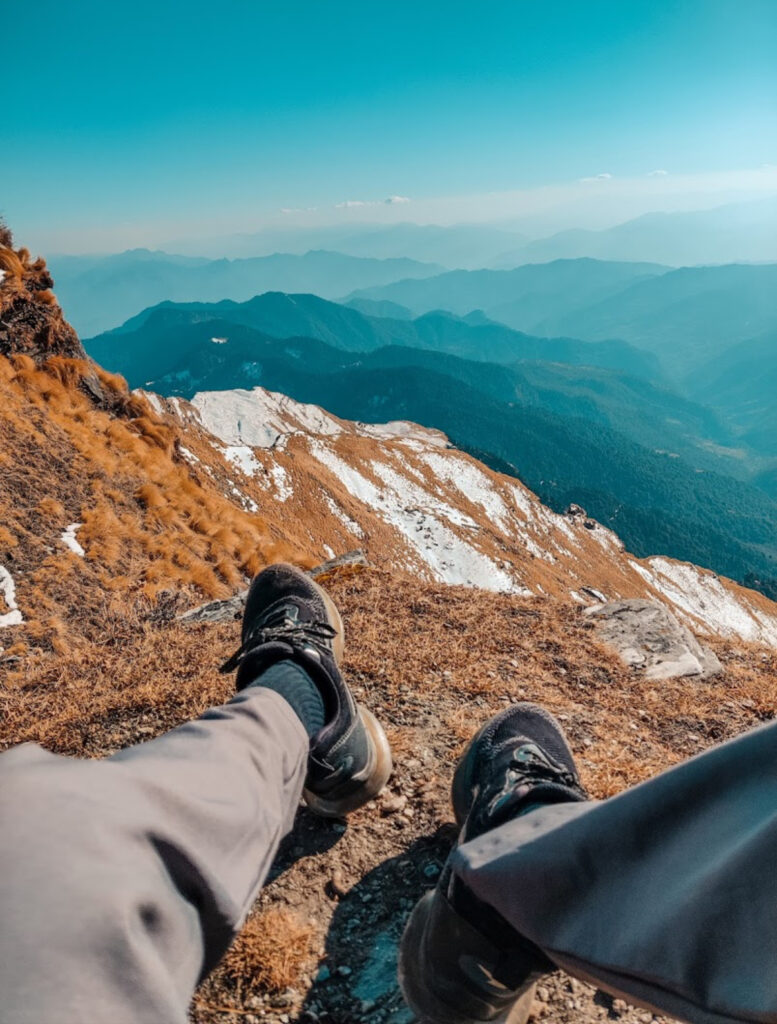
Ideal Time to Do the Chopta Tungnath Trek
The ideal time to do the Chopta Tungnath trek largely depends on what kind of experience you're looking for, as each season paints the landscape in a unique light. However, generally, the best times are when the weather is stable and the trails are clear.
Here's a breakdown of the ideal times:
Spring & Early Summer (April to June): The Most Popular Choice
-
Why it's ideal: This is widely considered the best time for the Chopta Tungnath trek.
-
Pleasant Weather: Days are comfortably warm (around 10°C to 25°C), and nights are cool. The air is crisp and clear.
-
Rhododendron Blooms: From mid-March to April-May, the forests come alive with vibrant rhododendron flowers, painting the landscape in shades of red and pink – a truly spectacular sight.
-
Clear Trails: The snow from winter has melted, making the trekking paths well-defined and easy to navigate.
-
Temple Access: The Tungnath Temple, which closes for winter, usually reopens its doors to pilgrims around late April or early May, after the Akshaya Tritiya festival. This allows you to visit the sacred shrine.
-
-
Who it's for: Perfect for first-time trekkers, families, and anyone who prefers moderate temperatures and clear views.
Autumn (September to November): Crisp Air & Panoramic Views
-
Why it's ideal: This is another fantastic window for the trek, offering a different kind of beauty.
-
Post-Monsoon Clarity: The monsoon rains have cleared the skies, leading to incredibly crisp air and stunning, unobstructed panoramic views of the Himalayan peaks like Nanda Devi, Trishul, and Chaukhamba.
-
Comfortable Temperatures: Days are mild and pleasant (around 5°C to 20°C), while nights are cool and invigorating.
-
Lush Greenery: The monsoon leaves behind a vibrant green landscape that gradually transforms with autumnal hues.
-
Temple Access: The Tungnath Temple generally remains open until early November before closing for the winter.
-
-
Who it's for: Trekkers and photographers seeking the best mountain views, those who enjoy cooler weather, and anyone looking for a peaceful experience after the summer rush.
Winter (December to March): A Snowy Wonderland (for the adventurous)
-
Why it's ideal (for some): If you dream of snow and are well-prepared, a winter trek offers a magical, serene experience.
-
Snowfall: Chopta and the Tungnath trail get heavy snowfall, turning the area into a breathtaking white landscape.
-
Solitude: Fewer tourists during this time, offering a more tranquil trek.
-
-
Considerations:
-
Cold Temperatures: It gets very cold, with temperatures often dropping below freezing, especially at night (-5°C to -15°C).
-
Challenging Conditions: The trail will be covered in snow, making the trek much more challenging and potentially slippery. You'll need proper snow trekking gear (gaiters, microspikes/crampons, waterproof boots).
-
Temple Closure: The Tungnath Temple is closed during these months due to heavy snow, and the idol is moved to Makkumath village.
-
Road Blocks: Roads to Chopta can sometimes be blocked due to heavy snowfall, requiring a longer walk from a lower point or alternative routes.
-
-
Who it's for: Experienced trekkers, snow lovers, and those seeking a challenging and unique winter adventure. A local guide is highly recommended, if not essential, during this period.
Monsoon (July to August): Lush but Risky
-
Why avoid it for trekking: While the landscape becomes incredibly lush and vibrant with waterfalls during monsoon, it's generally not recommended for the Chopta Tungnath trek.
-
Heavy Rainfall: Persistent rain can make trails very slippery and muddy.
-
Reduced Visibility: Clouds and mist often obscure the grand mountain views that are a main draw of the trek.
-
Landslide Risk: The region is prone to landslides during heavy rains, which can block roads and trails, making travel unsafe.
-
-
Who it's for: Primarily nature photographers or extreme adventurers willing to accept the risks for the unique misty landscapes, but most trekkers should avoid this period.
In summary, for a comfortable and rewarding Chopta Tungnath trek, aim for April to June or September to November. If you're a seasoned trekker seeking a snowy challenge, then winter can be an option with proper preparation and guidance.
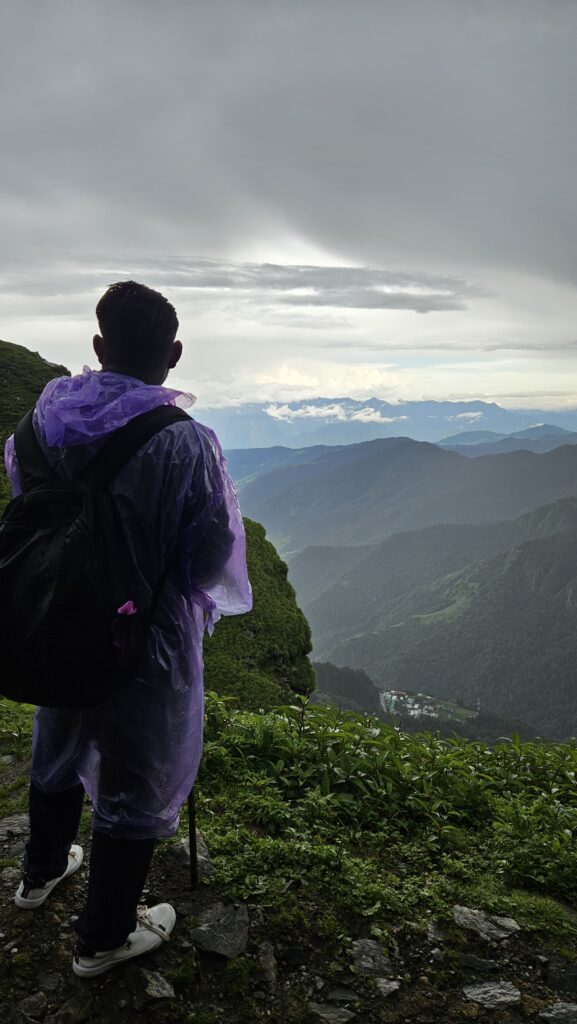
Key Landmarks Along the Trail to Tungnath Temple
The trek to Tungnath Temple, starting from Chopta, is a truly spiritual and scenic journey. While the entire trail is beautiful, there are a few key landmarks and points of interest that make the experience even richer. Knowing about these helps you appreciate the journey beyond just reaching the destination.
Here are the key landmarks you'll encounter along the trail to Tungnath Temple:
-
Chopta (The Base Camp): This is where your trek officially begins. Chopta itself is a stunningly beautiful meadow often called "Mini Switzerland of India" because of its vast, green pastures. It's usually your starting point and also where many trekkers stay overnight before or after their hike. You'll find guesthouses and campsites here.
-
The Trekking Trailhead: Just a short distance from the main Chopta area (often accessible by a quick drive or walk), you'll find the actual start point of the paved trail to Tungnath. There's usually a small gate or sign indicating the start of the Chopta Tungnath trek.
-
Lush Green Meadows (Bugyals): Almost immediately, the trail opens up into expansive, velvety green meadows, locally known as "bugyals." These are a signature feature of the Chopta-Tungnath landscape.
-
Rohini Bugyal: While technically a bit off the direct Tungnath trail (more on the route to Deoria Tal if you take that extension), the entire area surrounding Chopta is characterized by these beautiful meadows. As you trek, you'll be walking through these serene grasslands, often dotted with wildflowers in spring.
-
-
Dense Rhododendron and Oak Forests: As you gain altitude, the meadows gradually give way to dense forests. These forests are particularly stunning during spring (March to May) when the rhododendron trees are in full bloom, painting the landscape in vibrant shades of red and pink. The scent of the flowers in the crisp mountain air is truly refreshing.
-
Small Tea Stalls/Dhabas: You'll find a few small, simple tea stalls or "dhabas" intermittently along the trail, especially in the first half of the trek. These are great spots to take a short break, sip on a hot cup of tea, and enjoy some quick snacks like Maggi noodles while soaking in the views. They offer a welcome respite and a chance to interact with local vendors.
-
The Views of the Himalayan Peaks: Throughout the Tungnath Temple trek, you'll be treated to increasingly grand views of the surrounding Himalayan peaks. As you ascend, the trees thin out at higher altitudes, offering more unobstructed panoramas. You'll begin to identify peaks like:
-
Chaukhamba
-
Nanda Devi
-
Trishul
-
Kedarnath Dome These majestic views serve as a constant motivation to keep going.
-
-
The Final Approach to Tungnath: As you get closer to the temple, the trail often becomes a bit rockier, and you'll start to see the distinctive architecture of the temple complex appearing. The air gets thinner, but the excitement builds as you near your destination.
These landmarks aren't just points on a map; they're integral parts of the experience, each contributing to the unique charm and beauty of the journey to the highest Shiva temple in the world.

Extending Your Hike to Chandrashila – Worth It?
You've made it to the ancient Tungnath Temple, the highest Shiva temple in the world. You've soaked in its spiritual peace and marveled at the views from there. Now, there's just one more leg to consider: extending your hike to the Chandrashila Summit trek. Is that extra effort really worth it, especially after making the journey from afar, like the Chandrashila trek from Delhi or the full Chopta Chandrashila trek from Delhi? The resounding answer from trekkers who've been there is a definite YES!
Here's why pushing on to Chandrashila Summit trek is an experience you won't want to miss:
-
The Unrivaled 360-Degree Views: This is the primary reason why everyone recommends the Chandrashila trek. From the summit, which stands at around 4,000 meters (13,100 feet), you are rewarded with an absolutely breathtaking panoramic view of the mighty Himalayas. You'll see iconic peaks like:
-
Nanda Devi
-
Trishul
-
Chaukhamba
-
Kedarnath Dome
-
Bandarpunch
-
And many more, stretching across the horizon in every direction. No other spot on the Tungnath trail offers such a wide and uninterrupted vista, making the full Chopta Chandrashila trek from Delhi truly complete.
-
-
The Magical Sunrise (or Sunset): Many trekkers aim to reach the Chandrashila Summit trek for sunrise. Waking up early and making that final climb in the pre-dawn darkness is tough, but witnessing the first rays of sunlight paint the snow-capped peaks in hues of gold, orange, and pink is a truly spiritual and unforgettable moment. It's a memory that stays with you long after the trek is over. Even sunset offers a magnificent display of colors. This view is what makes the long journey, especially the Chandrashila trek from Delhi, so worthwhile.
-
Sense of Accomplishment: While the trek to Tungnath is fulfilling, reaching the actual peak of Chandrashila adds another layer of achievement. You've conquered the highest point of the trek, and that feeling of personal triumph, standing on the "Moon Rock," is incredibly rewarding.
-
Relatively Short Extra Distance: The distance from Tungnath Temple to Chandrashila Peak is only an additional 1.5 kilometers (about 0.9 miles). It's a steeper climb than the path to Tungnath, and you'll feel the altitude more here, but it's a manageable distance that most people with basic fitness can cover in about 45 minutes to 1 hour. Considering the immense reward, this short extra effort is minimal. This small add-on makes the complete Chopta Chandrashila trek from Delhi an even richer experience.
-
The "Crowning Glory" of the Trek: The Chandrashila trek is often considered the grand finale of the entire Chopta-Tungnath journey. It transforms a beautiful temple visit into a full-fledged Himalayan summit experience. If you've come all this way, especially undertaking the long Chandrashila trek from Delhi, missing the summit would be like reading a book and not finishing the last chapter.
-
Historical and Mythological Significance: Beyond the views, Chandrashila also holds mythological importance. It's believed that Lord Rama meditated here after defeating Ravana, and the moon-god Chandra spent time in penance at this peak. This adds a deeper layer to your experience.
In conclusion, extending your hike from Tungnath to the Chandrashila Summit trek is absolutely worth every extra step. The panoramic views alone are justification enough, but combined with the thrill of reaching a Himalayan peak and the spiritual significance, it transforms a great trek, especially one starting all the way from the Chandrashila trek from Delhi, into an extraordinary one. Just remember to start early from Chopta if you plan to do the sunrise trek and carry sufficient water and snacks for that final push!
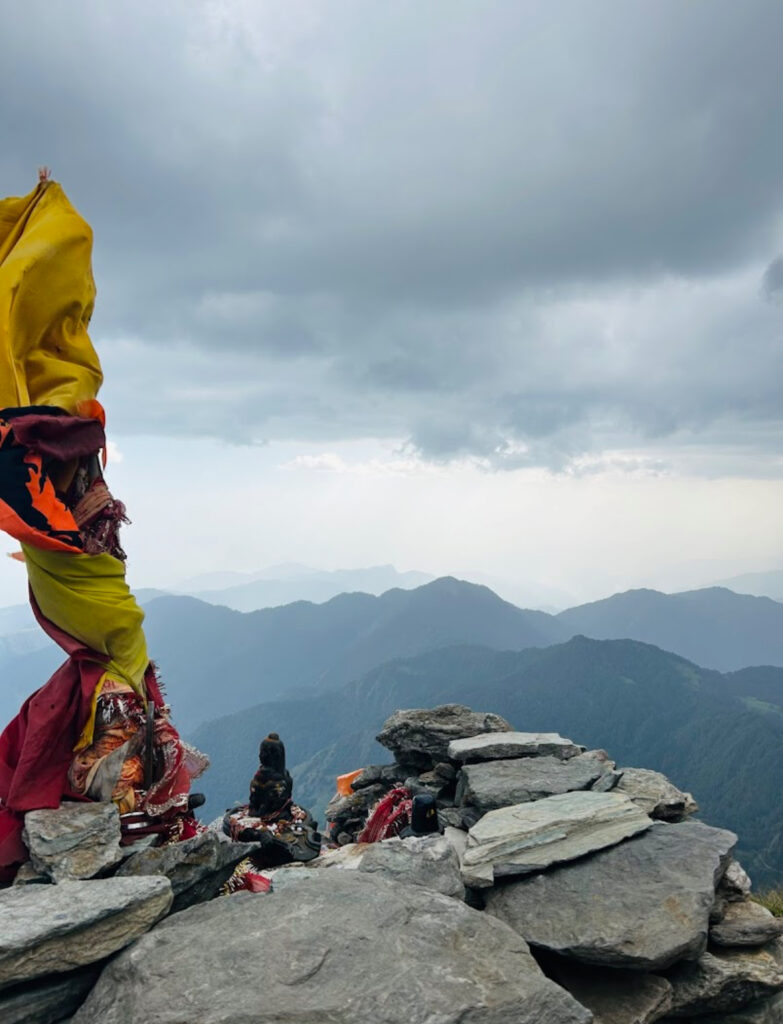
Frequently Asked Questions:
1. What is the best time to visit Chopta for trekking and snow?
Answer: For snow lovers, December to February is ideal. For trekking, March to June and September to November offer the best weather and clear trails.
2. Is the Chopta Tungnath Trek suitable for beginners?
Answer: Yes, it’s perfect for beginners! The trek is moderate in difficulty with gradual inclines and scenic views all along.
3. What is the cost of a budget Chopta tour package under ₹6000?
Answer: With TourMyHoliday, you can get a complete 2N/3D Chopta tour package under ₹6000 including stay, meals, and guide.
4. How far is the Chandrashila summit from Tungnath Temple?
Answer: The Chandrashila summit is about 1.5 km uphill from Tungnath, and takes around 45 minutes to 1 hour to reach.
5. Are there luxury stays available in Chopta?
Answer: Yes, apart from budget camps, there are luxury eco-resorts and premium cottages available with warm hospitality and mountain views.
6. What is the Chopta Chandrashila trek distance from Delhi?
Answer: The distance from Delhi to Chopta is around 450 km, and the trek from Chopta to Chandrashila via Tungnath is about 5 km (one way).
7. Can I get snowfall during a Chopta tour package from Delhi?
Answer: Yes, if you travel between late December and February, you can enjoy snowfall even with a weekend Chopta package from Delhi.
8. Is there mobile network in Chopta?
Answer: Limited. BSNL and Jio work in patches. Prepare for a digital detox amidst nature!
9. How cold does it get in Chopta during winter?
Answer: Temperatures can drop as low as -10°C to -15°C in peak winter, so carry proper woollens and thermal gear.
10. What makes TourMyHoliday Chopta tour package special?
Answer: We offer custom itineraries, local guides, stays with views, and both budget and premium packages with all essential comforts.
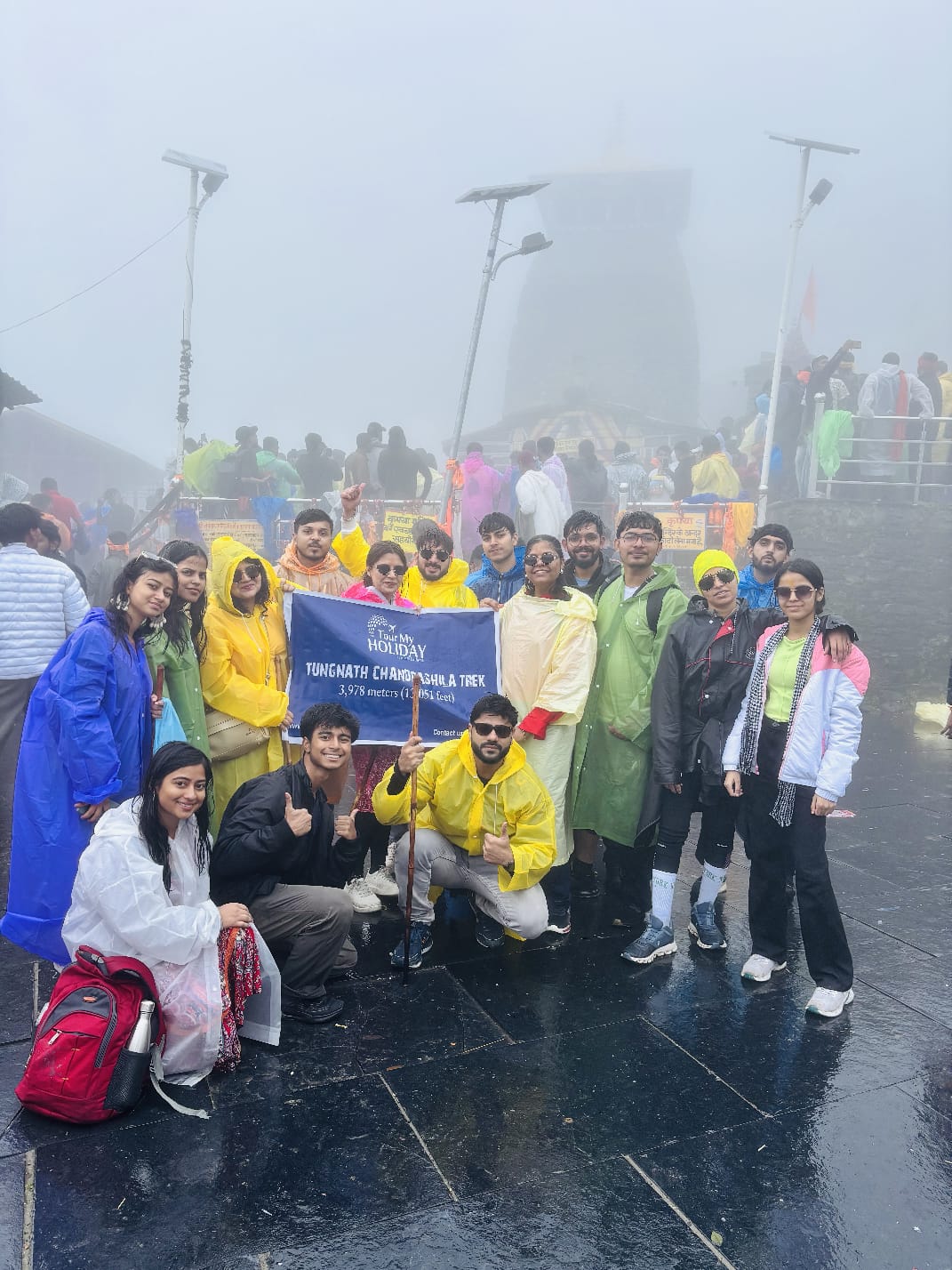

.jpg)
